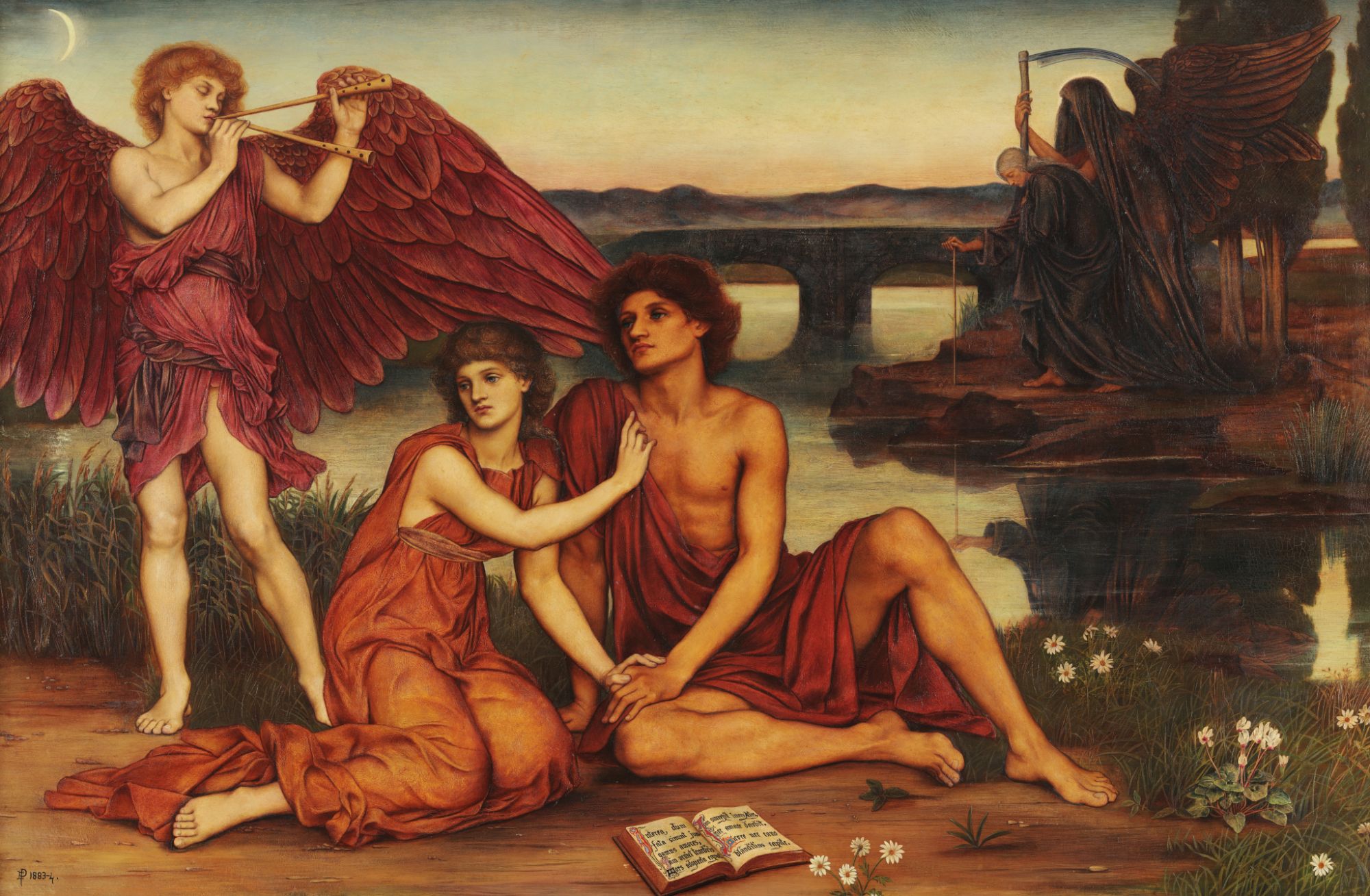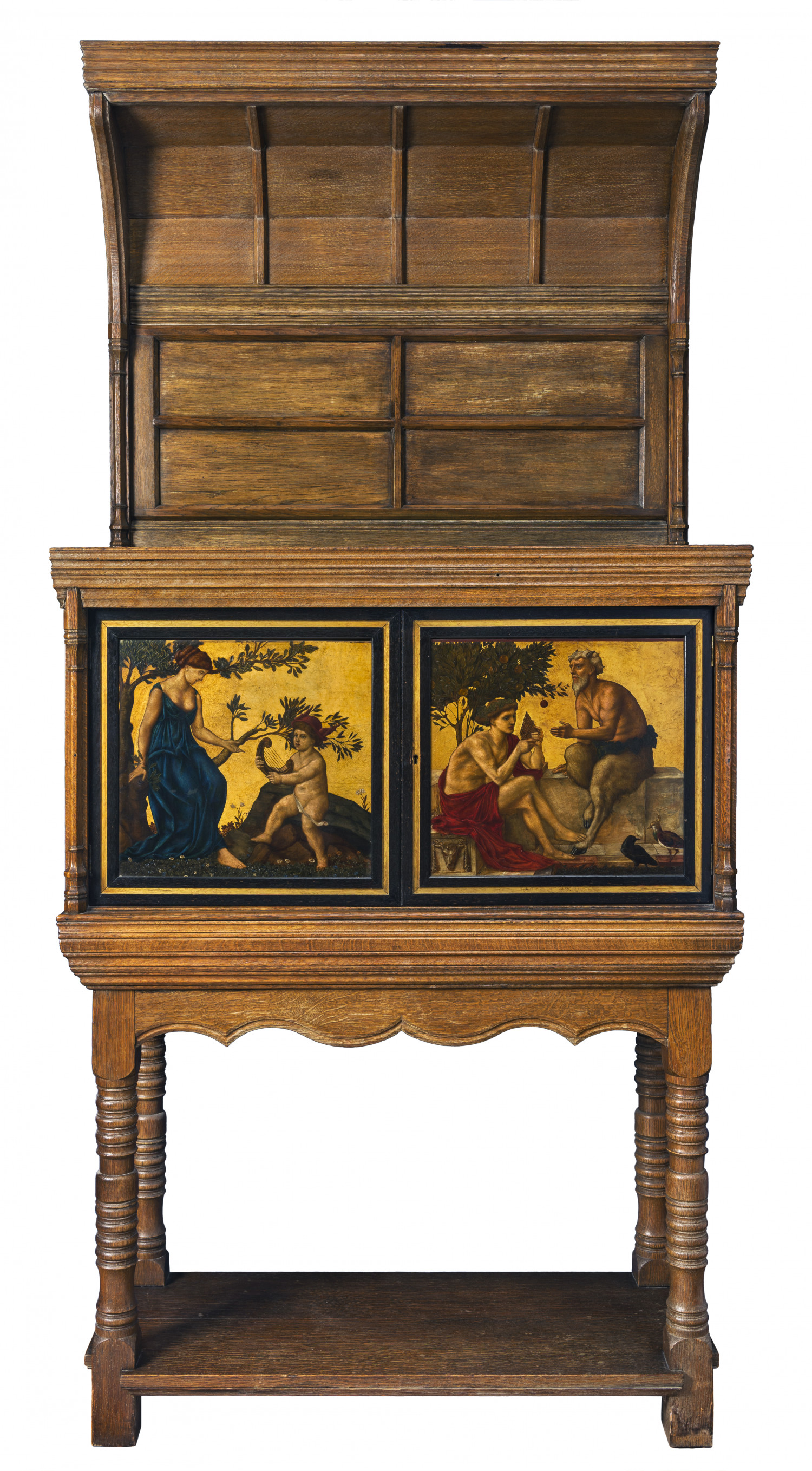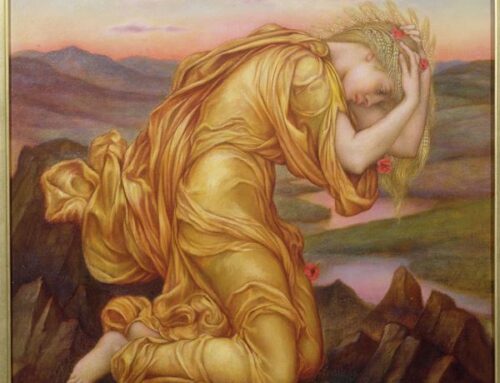The Harmonious World of De Morgans: Exploring Art, Music, and Love

Love’s Passing (1883) by Evelyn De Morgan
Evelyn and William De Morgan had a deep connection with both art and music which is demonstrated by many of their artworks and highlighted by their acquisition of an Angelus player piano mechanism in 1910.
Evelyn De Morgan’s ‘Love’s Passing’: An Angelic Ode to Love
Evelyn De Morgan’s ‘Love’s Passing’ is a mesmerising painting that encapsulates the essence of love through the symbolism of music. In the artwork, an angelic figure plays music, serving as a representation of love itself. The use of music as a metaphor for love adds a lyrical dimension to the painting. The young couple we see are momentarily distracted by the beautiful song the angel plays. However, the apparition in the background shows a lonely old woman being lead away by the Angel of Death, serving as a stark reminder that – like the angel’s song – love has an abrupt ending in death.
William De Morgan’s Musical Panels: A Symphony in Oak
In the late 19th century, William De Morgan collaborated with designer Philip Webb to create painted panels for Webb’s cabinet, now housed in the William Morris Gallery. One panel depicts two figures, possibly Hera/Juno or Muse Erato with the young Hermes/Mercury holding the first lyre. Another panel showcases Pan or Silenus instructing Dionysus/Bacchus to play the pipes. The intricate details and vivid colours bring these musical characters to life, turning the cabinet into a visual symphony.
The Musical Cabinet’s Journey: From Isabel Olga Lucas to the William Morris Gallery
Originally crafted for Isabel Olga Lucas, the cabinet with its musical panels found its way through different owners before ultimately being acquired by the William Morris Gallery in 1955. The back of the cabinet, initially covered with stamped leather paper, underwent transformations over the years. Despite these changes, the musical panels were retained, showcasing William De Morgan’s interest in figurative design.
The De Morgans’ Lifelong Love of Music: An Angelus at 127 Old Church Street
Beyond their artistic endeavours, the De Morgans shared a profound love for music. In 1910, they celebrated their move to 127 Old Church Street by acquiring an Angelus player piano mechanism. The Angelus, developed by the Wilcox & White Piano & Organ Company, brought the magic of music into the De Morgans’ home. This player system, designed to play with expression and nuance, added a melodic backdrop to the artistic tapestry of their lives.
In her biography of William and Evelyn De Morgan, Wilhelmina Stirling says of the couple’s angelus purchase: “Further to reconcile them to their new surroundings, they had purchased an Angelus. Both passionately fond of music, and insatiable attendants at concerts, neither could spare the time necessary to become musicians ; therefore despite his life-long devotion to the Waldstein Sonata, De Morgan, playing on his new acquisition daily, declared that it had first revealed Beethoven to him. To Professor Mackail he wrote : —
127 Church Street, Sept, 19th, 1910. ‘
My DEAR Jack, — ‘ I thought you weren’t back — (I hope your qualifications will enable you to appreciate that couplet). So I have not been round your way. ‘ We have got settled in here at last, i.e., we have got to the period in which the electric bells begin to get out of order. The hot water apparatus hasn’t begun transgressing yet — it will. . . .
You must come along some day next week and see the house. ‘ You must promise not to look at our Angelus we’ve bought, only that mustn’t be held to imply any contract on my part not to look at your Angela.
I am glad you are looking me out blunders in a A.F.O.D. [An Affair of Dishonour] — ^there are plenty. A little before the last re-issue of I.N.C.H.A. [It Never Can Happen Again] I sent of forty-two corrections of slips, large and small. This book will sell more than the others. ‘ Our loves to you— extremely.
Yours faithfully,
‘ Wm. De Morgan.’
The De Morgans enjoyed listening to music and this love filtered through into the artworks which they made.








